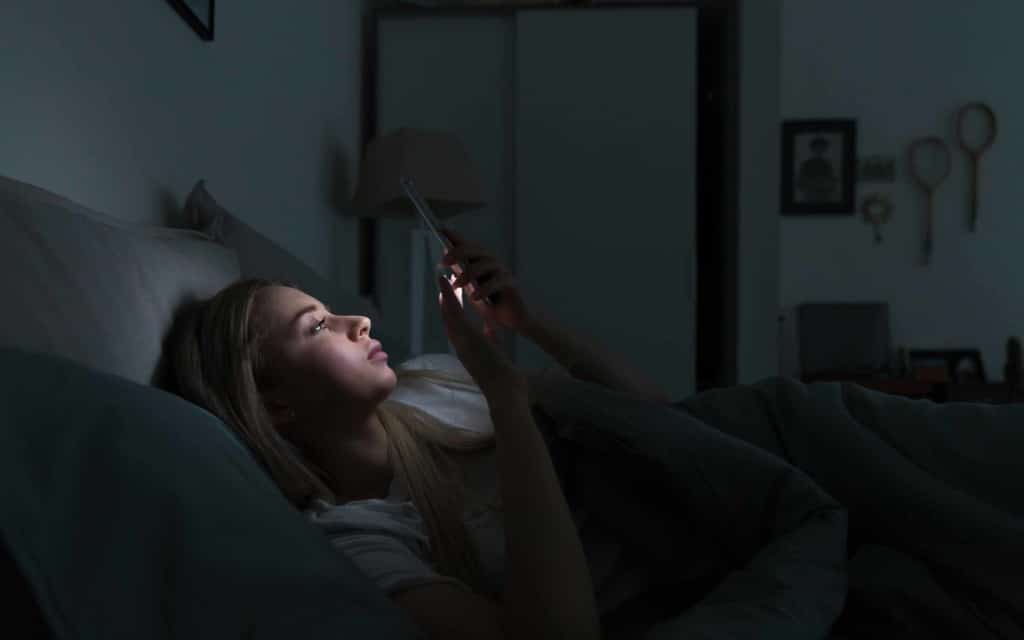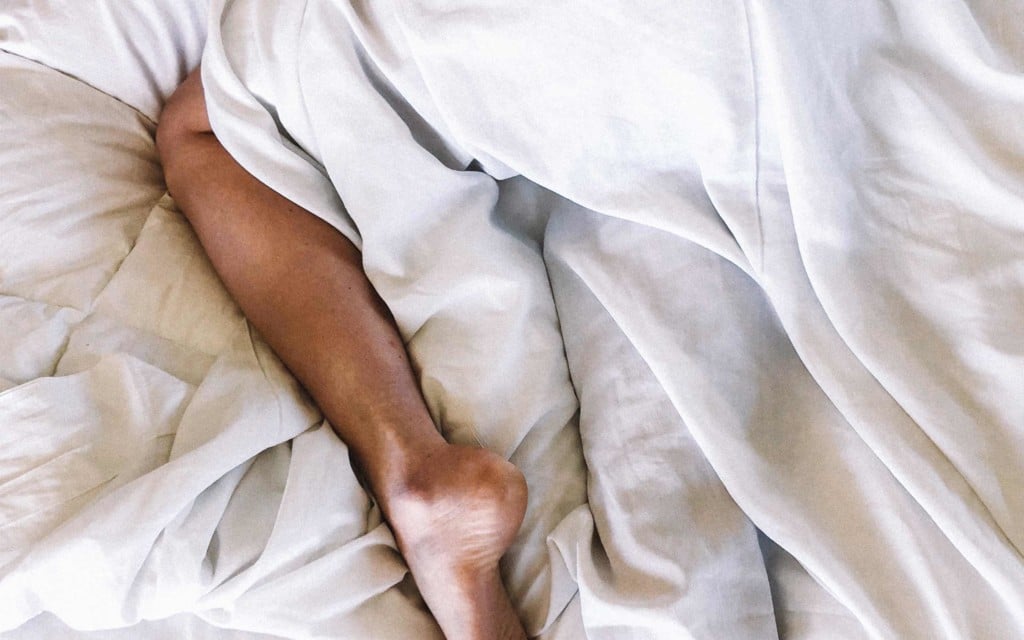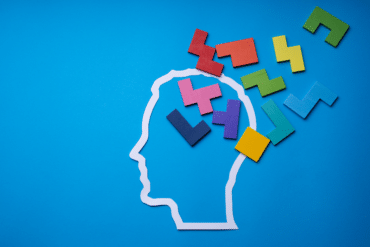Can’t sleep? You’re not alone. What if you could retrain yourself to sleep?
Here’s your guide to the basics of CBTI, and how you can use it to address various sleep disorders. Today we’re going to present sleep restriction, sleep retraining and where to find your best CBTI books.
When you’re struggling with a lack of sleep, you’ll want something you can use to eradicate the problem immediately. It’s pretty common for us to wish for a magic pill that will knock us out and give us the crucial rest we need.
Unfortunately, while medication for sleep does exist, it’s not without its problems.
Not only can you only take pills for insomnia for a very short time, but when you are taking them, you’re subject to side effects like daytime drowsiness, withdrawal, and addiction.
It’s no wonder medical professionals began looking for a better way to treat insomnia. This is how CBTI came about. In some countries they now even offer free online CBTI.
CBTI could be the solution many of us bleary-eyed insomniacs have been searching for. The following article provides a snapshot of the different aspects of CBTI, with links to more elaborate explanations for each.

Cognitive behavioural therapy for insomnia: Start your sleep retraining.
If you need a refresher on the definition of cognitive behavioural therapy, you can find it here.
If not, let’s jump straight in.
CBTI is a sub-section of the CBT practice that deals specifically with insomnia. Unlike other therapeutic treatments that address things like anxiety and depression, CBTI deals with anything that could harm your quality of sleep — including sleep hygiene.
Experts believe that CBTI training could be the best way to treat insomnia, because it doesn’t use any drugs or medications.
Additionally, if the patient can stick with their CBTI training, they may be able to eliminate insomnia for good. Research suggests great success rates of CBTI, especially sleep restriction therapy.
The purpose of CBTI training is to correct and improve a person’s actions and thoughts towards sleep. It’s all about replacing unfortunate habits with good ones, when it comes to transforming your sleep pattern.
Even people who have dealt with sleep disorders for years, can still benefit from sleep retraining with real life or online CBTI therapists.
CBT for insomnia is for insomniacs who don’t have severe physical ailments, like sleep apnea. Sleep retraining with CBTI will help you to reset the thoughts and actions that are keeping you awake.
Once you know which behaviours are stopping you from sleeping, you can put measures in place to overcome those roadblocks.
How does CBTI and sleep retraining work?
Like any other form of cognitive behavioural therapy, CBTI is a method of behavioural and psychological training. The aim is first to improve sleep quality and later worry about the hours you get.
CBTI training therapists also work with you to modify the activities that engage and perpetuate your insomnia. Like rolling around in bed for ages, even though you know you can’t sleep.
For instance, imagine that every time you go to bed, you feel a sense of overwhelming anxiety about whether or not you’re going to fall asleep.
You might spend hours sitting and staring at the clock, becoming increasingly agitated by the knowledge that you’re going to miss out on sleep.
If the problem is allowed to persist, you may eventually become afraid of going to bed at all.
With CBTI sleep retraining, you address the thoughts that cause you to stay awake, and use helpful techniques like progressive relaxation, or even paradoxical thinking, to alter the situation.
There are many different practices available within CBTI, and each patient needs their own specialized treatment plan.
That’s why you’ll usually visit CBTI therapists for a number of weeks, as you work on overcoming the underlying issues you have with sleep.
During treatment, you may also be given medication to help you overcome your initial sleepless nights. However, it’s unlikely that you’ll remain on medication for very long.
While CBTI is focused inherently on overcoming insomnia, it may also address other mental issues like depression, anxiety, or stress.
That’s because the mind and your emotional state can also have a detrimental impact on your ability to sleep.
The common methods of CBTI sleep retraining
The kind of treatment you get from CBTI will depend on your background, your situation, and the kind of CBTI therapists that you visit.
Usually, most experts will use a combination of the following methods to change your relationship with sleep:
Sleep hygiene training
One of the fundamental concepts of CBTI is sleep hygiene training. This kind of therapy helps to address the behaviours that are stopping you from getting restful sleep.
For instance, you may need to develop a better schedule for bedtime and change the way your bedroom is set up, so you feel more comfortable when you go to bed.
Common adjustments include increasing your daily exercise, reducing your caffeine intake, and limiting the amount of time that you spend on a mobile device before you sleep.
Read our extensive guide to sleep hygiene training, introducing your sleep worksheet, click here.

Stimulus control
Stimulus control for CBTI training is all about overcoming the negative associations that you have with your bedroom, and bedtime.
People who have suffered from insomnia for months or years often begin to dread going to bed.
Stimulus control offers advice like making sure you only go to bed when you’re tired and using your bed exclusively for sleeping to overcome these fears.
It also encourages you to get out of bed and do something else if you can’t sleep. Even after as short as 15 minutes of not sleeping.
If you want to know the full depths of stimulus control, click here.
Sleep restriction therapy
One of the core principles in CBTI is sleep restriction therapy. The main idea is to retrain your brain and body into only spending time in bed asleep, not awake.
Sleep restriction is all about resetting your circadian rhythm — the pattern your brain uses to manage your sleep.
Although it can be difficult at first, because it involves restricting the amount of time you spend asleep, it can be very helpful in the long-term. You might start out just sleeping 3-5 hours each night.
As your quality of sleep improves, your CBTI therapists will ask you to experiment with the amount of time that you spend in bed, until you find the point at which you feel most rested. This is likely to be somewhere between 7 and 9 hours after going to sleep.
Are you eager to know more about restriction to overcome insomnia, click here.
Relaxation training and progressive muscle relaxation
Most CBTI therapists will include relaxation training as part of your overall treatment for insomnia. That’s usually because most of us could do with learning better ways to relax when we go to bed.
Relaxation training addresses feelings of hyper-arousal and stress by teaching you how to focus your mind and reduce tension.
When you can properly relax your mind and body, it’s much easier to lull yourself into a deeper, higher-quality sleep. Get to read more on progressive muscle relaxation, see our post on soothing release therapy here.
Biofeedback
Your doctor might suggest using biofeedback with your relaxation training too. This kind of CBTI therapy is used to give you information about your body, so you can understand why you’re struggling to relax.
For instance, you might get information about blood pressure, muscle tension, and heart-rate.
After multiple sessions, you can begin to better recognise the things in your body that could be keeping you awake, so you can relax and sleep more easily.
Want to dive into hacking your biofeedback, click here.
Cognitive control
Cognitive control is similar to stimulus control. It helps you to identify the feelings and thoughts that could be either keeping you awake or waking you up during the night. Also called sleep interfering thought patterns.
Rather than just adjusting things like when you go to bed, cognitive control focuses on replacing negative thoughts in your mind with positive and relaxing feelings.
Simply put, if you’re staying awake because all you can think about is how tired you might be tomorrow, cognitive control would tell you to remember that you can get by with less sleep if you need to.
Get in cognitive control mode and learn the extents of cognitive control therapy here.
Paradoxical intention
Finally, paradoxical intention is a lot like reverse psychology. With this strategy, clinicians encourage patients to stick to their nighttime routine.
However, if you feel like you can’t sleep, then you tell yourself that you’re going to stay awake instead.
The idea is that telling yourself that you’re going to stay awake will reduce some of the pressure that you feel to fall asleep. This makes it easier to relax and fall into a deeper slumber because you’ve let go of a kind of stress.
Set your mind into reverse and get those intensions working for your sleep routine, click here.
Does CBTI really work?
Clearly, there are plenty of ways to get involved with CBTI training.
The question is, do any of them really work?
In most cases, CBTI is just like any other kind of therapy. You’ll get out of it whatever you’re willing to put in.
If you agree to follow the instructions of your therapists carefully and stick to the right routine, then you can definitely benefit from cognitive behavioural therapy for insomnia.
Studies show that CBT can shorten sleep latency by up to 45 minutes, and increase the total time that you spend asleep by up to 60 minutes too.

Researchers say that this strategy is just as effective as using medication to treat insomnia. The main difference is that that CBTI has a more long-lasting and healthy impact on the patient than medication.
Previous studies have also supported the idea that CBTI is better for insomnia than medical interventions.
Researchers consistently find that after treatment, people who previously had insomnia were able to overcome their sleep issues and fall into a deeper slumber more quickly.
As with most therapies, there are also some people that are more likely to respond well to CBTI training than others.
For instance, research indicates that therapy is particularly useful for people who experience sleep disturbances caused by anxiety and stress.
It can also be incredibly helpful for people who have disturbances associated with PTSD.
The downside of CBT is the time requirements and expense that the patient needs to spend on actually improving their behaviour and thought patterns.
You won’t be able to change your habits overnight. You’re going to need to give the process some time.
Should you seek CBTI therapists? Or find a CBTI book?
The sad truth is that most of us will need to address the problem of insomnia at some point during our lives. Issues with sleep become more common as the brain’s mechanisms for falling asleep at night and staying asleep become weaker.
Additionally, some people just tend to be more hyper-alert than others, which means that they’re more likely to suffer from insomnia regardless of age.
The good news is that even if you happen to be one of those hyper-alert people, CBT can still help. Various controlled studies into people from different backgrounds have confirmed the efficacy of CBTI.
Maybe start by reading one of these great examples of CBTI books:
Sleep Through Insomnia: End the Anxiety and Discover Sleep Relief with Guided CBT-I Therapy
Cognitive Behavioral Treatment of Insomnia: A Session-by-Session Guide
The Effortless Sleep Method: The Incredible New Cure for Insomnia and Chronic Sleep Problems
You Can Sleep Too!: Cure insomnia & chronic sleep problems with CBTi (CBT-I). I did. So can you.
The key to success is discussing your issues with your doctor, so you can get the treatment that’s most tailored to your needs.
Siestio. Sleep Matters.
Now read these:
—How to train poor sleep hygiene with CBT
—How to use CBT for your sleep disorders
—What is paradoxical intention therapy
Medical disclaimer
You must not rely on the information provided on our website as an alternative to medical advice from your doctor or other healthcare professionals. For more information read our full disclaimer here.







